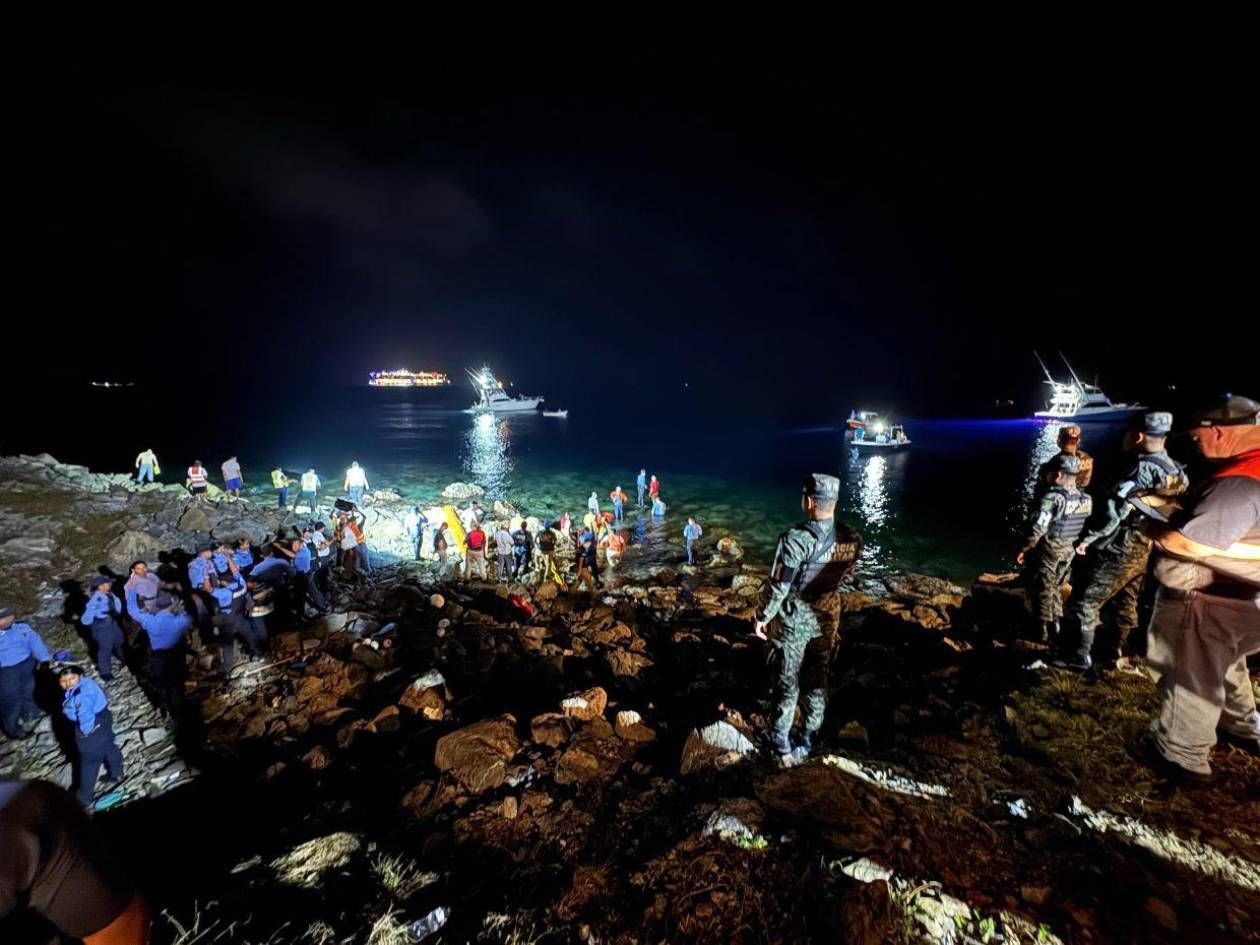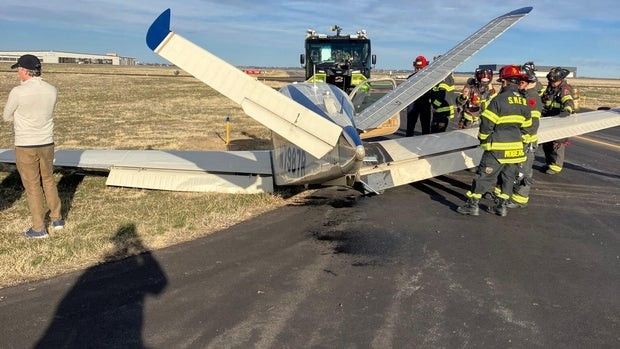ARFF Daily News
Published on:
Tuesday the 18th of March, 2025
Passenger plane crashes into the sea after takeoff in Roatán, Honduras
A plane with more than a dozen passengers on board suffered a spectacular air crash at the Roatán airport in the Bay Islands department.
El Heraldo
Roatán, Bay Islands.- A fatal plane crash was reported on Monday night, March 17, after a plane carrying passengers suffered a mishap upon taking off from Juan Manuel Gálvez Airport in Roatán, Bay Islands department, in the island region of Honduras.
It was reported that 17 people boarded the plane bound for Golosón Airport in La Ceiba, Atlántida, but the tragedy occurred minutes after takeoff.
Initially, the director of the Roatán Hospital, Ruth Cacho, reported that there were six fatalities: four women and two men, all of whom are presumed to be passengers as they were not wearing uniforms. The identities of the deceased are currently unknown.
However, a few hours later, the Honduran Fire Department confirmed on social media that the death toll had risen to 12.
So far, only one of the victims has been fully identified: Aurelio Martínez Suazo , a renowned Garifuna singer-songwriter.
Jorge Corrales, deputy director of the Honduran Civil Aeronautics Agency (AHAC), said the plane was a Jetstream 32 model belonging to the airline Línea Aérea Nacional de Honduras SA (LANHSA), registered HR-AYW. The aircraft was piloted by Luis Araya and co-piloted by Francisco Lagos.
He said the plane took off and made a right turn near a VOR (Operational Range) and landed in the sea a minute later.
On the other hand, he mentioned that the plane didn't catch fire while flying overhead, but rather after hitting the waves. In response to this tragedy, the airport closed its operations.
Who are the passengers?
Following the accident, a list of passengers was released, who were identified by the following names:
1) Aurelio Martinez Suazo (Honduran with US documentation)
2) Helen Odile Guivarch (French)
3) Carlos Eduin Mejia Ramos
4) Alba Rosa Acosta Torres
5) Rosmery Nicolle Mejia Acosta
6) Karla Abigail Mejia Acosta (minor)
7) Liliana Rosa Ondina Estrada Chacon
8) Nidia Miralda Benitez
9) Luis Mejia Mejia
10) Yeimi Alejandra Duarte Urribiera
9) Alejandra Henriquez Gostas
10) Seida Siomara Torres
11) Nidia Miralda Benitez
12) Jayro Vargas Reyes
13) Angie Flores Hernandez
14) Andrea Abigail Flores (minor)
15) Luis Araya (pilot)
16) Francisco Lagos (pilot)
It is unknown who is among the dead or injured.
Search to continue on Tuesday
Several people were pulled from the water and taken aboard aircraft to hospitals in La Ceiba and San Pedro Sula. Their condition is reserved.
Rescue efforts were suspended late at night due to poor visibility and rough waves. One last body remained to be recovered, according to the firefighters' report.
Meteorological authorities have announced a cold front that will impact the northern part of the country and could further disrupt work.
https://www.elheraldo.hn/sucesos/avion-sufre-accidente-aereo-pasajeros-abordo-aeropuerto-juan-manuel-galvez-roatan-cayo-mar-JM24934940

Small plane lands without landing gear at Centennial Airport in Colorado
By Jennifer McRae
A small plane landed at Centennial Airport over the weekend without landing gear. South Metro Fire Rescue crews said the one person on board was able to walk away from the hard landing.
According to the airport, the Beechcraft Bonanza appeared to land gear up on Runway 35L and veered off the runway about 5:40 p.m. Sunday.
The pilot was the only person on board and was able to evacuate safely. The plane appeared to suffer some damage.
https://www.cbsnews.com/colorado/news/small-plane-lands-without-landing-gear-centennial-airport-colorado/

Why fire crews weren’t on site when an American Airlines plane landed at DIA before catching fire
FAA regulations require Aircraft Rescue and Fire Fighting units to be on site at all commercial airports when a pilot declares an emergency.
Author: Rhea Jha
DENVER — Federal investigators are working to determine what caused an engine fire on American Airlines Flight 1006 at Denver International Airport, which forced passengers to evacuate onto the wing.
The fire broke out after the Boeing 737-800 landed and was taxiing to the gate Thursday, prompting a chaotic evacuation that has raised questions about why passengers had to go out onto the wing, why emergency responders were not in position when the plane touched down and what caused the fire.
The National Transportation Safety Board (NTSB) is leading the investigation and will be looking at maintenance records, mechanical failures, and the timeline of the fire to determine what went wrong.
Why Passengers Were Forced onto the Wing
Passengers were seen evacuating onto the left wing of the aircraft, a rare event in commercial aviation. 9NEWS Aviation Expert Greg Feith said only half of the plane’s eight exits were usable due to the fire and the aircraft’s position at the gate.
“The problem with the DIA fire was that the jetway hadn’t been pulled up to the aircraft yet,” Feith said. “Without the jetway, you can't use that exit anymore because the slide won't deploy. There's not enough room… This one would be available, but this engine was on fire, and this is where all the smoke was.”
With three exits near the burning engine unusable and one front exit unusable due to the jetway, passengers had limited ways out.
Why Firefighters Weren’t Waiting at Landing
Passengers on board expected to see emergency crews on standby when they landed—but they weren’t.
“I was trying to think rationally, like, there should be fire engines here when we land if this plane is on fire. Certainly, there’s gonna be somebody there to extinguish it,” passenger Ingrid Hibbitts said.
FAA regulations require Aircraft Rescue and Fire Fighting units to be on site at all commercial airports when a pilot declares an emergency—but in this case, the pilot did not.
An air traffic control audio recording confirms that the pilot did not initially report an emergency when controllers checked in.
ATC: “1006, just to verify—not an emergency, still correct?”
Pilot: “Nah, we just have a high engine vibration, so we are cruising slower than normal.”
“The plane was diverted with no explanation,” a spokesperson for DIA said in a statement.
Because the flight was diverted due to an engine vibration, not an active fire, standard emergency procedures were not activated until after landing.
“The fire began once the plane came to the gate. When the fire was first observed, our emergency notification system was activated. Fire response is part of that system. All emergency response procedures were followed as protocol,” the statement from DIA said.
What Caused the Fire?
Aviation experts say engine fires on modern jets are rare, and investigators are working to determine how the fire started.
Passengers described smelling gas and fuel before landing.
Feith said it’s a possibility the fire was caused by a punctured fuel line, possibly from a broken engine blade.
“It’s evident from the type of fire that occurred, with thick black smoke pooling under the engine,” Feith said. “That’s indicative of a fuel-based fire.”
Feith said a big part of the investigation will involve analyzing maintenance records, engine components, and flight data to determine whether a mechanical failure or improper maintenance contributed to the fire.

NTSB Prelim: Grumman American Avn. Corp. AA-5A
Engine Lost Partial Power About 450 To 500 Ft Above Ground Level During The Initial Takeoff Climb
Location: Gladewater, TX Accident Number: CEN25LA096
Date & Time: February 17, 2025, 22:15 Local Registration: N26071
Aircraft: Grumman American Avn. Corp. AA-5A Injuries: 1 Minor
Flight Conducted Under: Part 91: General aviation - Personal
On February 17, 2025, about 2215 central standard time, a Grumman AA-5A airplane, N26071, was substantially damaged when it was involved in an accident near Gladewater, Texas. The pilot sustained minor injuries. The airplane was operated as a Title 14 Code of Federal Regulations Part 91 personal flight.
According to the pilot, the airplane engine lost partial power about 450 to 500 ft above ground level during the initial takeoff climb. The pilot immediately made a left turn back towards the airport and conducted a slow but controlled descent with the remining engine power. He chose to continue the turn and performed a forced landing to the grass next to the runway which resulted in substantial damage to the left wing and empennage.
The pilot stated that he was ferrying the airplane to the Rusk County Airport (RFI) in Henderson, Texas, to have engine maintenance performed. The pilot further stated that the carburetor had been replaced about two weeks prior, and the airplane was experiencing a slight engine stumbling at full power and full mixture on subsequent flights.
Postaccident examination of the engine revealed that the carburetor inlet rubber duct between the airbox and carburetor was puckered inward at both the airbox outlet and carburetor inlet. The puckering of the duct was observed to be partially blocking the carburetor venturi.
The airplane was retained for further examination.
FMI: www.ntsb.gov

Today in History
86 Years ago today: On 18 March 1939 The Boeing S.307 Stratoliner prototype was destroyed when it broke up during a test flight out of Seattle-Boeing Field, USA. All 10 on board were killed.
Date: Saturday 18 March 1939
Time: 13:17
Type: Boeing S.307 Stratoliner
Owner/operator: Boeing
Registration: NX19901
MSN: 1994
Year of manufacture: 1938
Cycles: 19 flights
Engine model: Wright R-1820-G102A
Fatalities: Fatalities: 10 / Occupants: 10
Other fatalities: 0
Aircraft damage: Destroyed, written off
Category: Accident
Location: near Alder, WA - United States of America
Phase: Manoeuvring (airshow, firefighting, ag.ops.)
Nature: Test
Departure airport: Seattle-Boeing Field International Airport, WA (BFI/KBFI)
Destination airport: Seattle-Boeing Field International Airport, WA (BFI/KBFI)
Confidence Rating: Accident investigation report completed and information captured
Narrative:
The Boeing S.307 Stratoliner prototype was destroyed when it broke up during a test flight out of Seattle-Boeing Field, USA. All 10 on board were killed.
Dutch airline KLM had expressed an interest in the newly developed Boeing S.307. The KLM technical director and a representative of the Dutch Air Ministry, Albert von Baumhauer, had traveled to Seattle for an evaluation of the aircraft. Von Baumhauer had particular interest in the stability and control of the aircraft.
The aircraft took off from Boeing Field, Seattle at 12:57 on test flight no. 19. The captain occupied the left hand cockpit seat, Mr. von Baumhauer occupied the right hand seat. Mr. von Baumhauer held a private pilot's license and his total flying time as pilot amounted to 116 hours. He had no experience as pilot or co-pilot of four-engine aircraft, but had been observer in trial flights of four engine Fokker F.22 and F.36 aircraft.
After takeoff the aircraft climbed to an altitude of 11000 feet. At this altitude longitudinal stability tests were made. The next tests, as outlined by the flight plan, were side-slip tests.
The aircraft went into an inadvertent spin subsequent to a stall at an altitude of approximately 11000 feet. It made two to three turns in the spin, during which the engines were used to aid recovery. In recovering from the dive subsequent to the spin, the wings and horizontal tail surfaces failed upward apparently due to air loads in excess of those for which the aircraft was designed.
Investigators noted that the captain on the flight was inexperienced in testing and demonstrating aircraft of this type, particularly with respect to the maneuvers called for. Also, Mr. Von Baumhauer, acting as copilot was inexperienced. Other potential factors were the sensitivity of the elevator and rudder control system, possible elevator flutter and insufficient vertical tail surfaces to give adequate control of the aircraft under all conditions of flight. The tail surface was changed and enlarged in production models.
PROBABLE CAUSE: "Structural failure of the wings and horizontal tail surfaces due to the imposition of loads thereon in excess of those for which they were designed, the failure occurring in an abrupt pull-out from a dive following recovery from an inadvertent spin."

